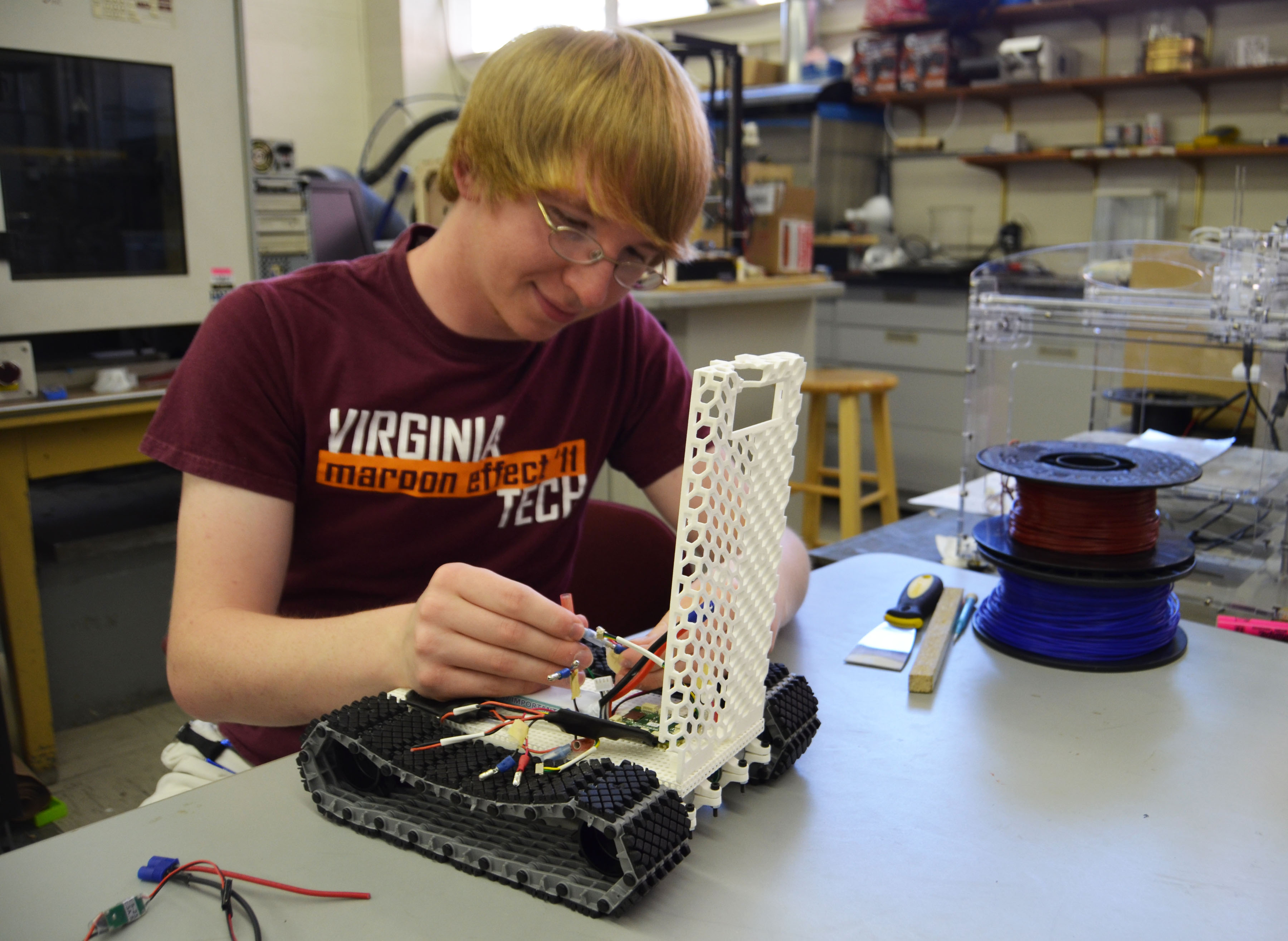Virginia Tech to host debut 3-D printed ground and air vehicle competition finale May 15

Fourteen student teams from across Virginia Tech will compete May 15 in the finale of a debut competition designed to encourage the creation of remote-controlled 3-D printed air and ground vehicles.
The teams – from across the university, and including students from engineering, geosciences, public relations, physics, biology, and more – are competing in the Spring 2014 Additive Manufacturing Grand Challenge, in part sponsored by the U.S. Air Force. Up for grabs: $15,000 in cash prizes, including $3,000 for first prize in each category, and $250 for each team that creates a functional vehicle. Seven teams in each category – air and ground – will compete.
Leading the competition is Christopher Williams, head of Virginia Tech’s Design, Research, and Education for Additive Manufacturing Systems – or DREAMS, for short – Lab.
“At this competition, students will pilot their printed air or ground vehicles around an obstacle course and use their on-board cameras to conduct a simulated reconnaissance mission,” said Williams, an associate professor with the departments of engineering education and mechanical engineering, of the finale.
The ground vehicles will travel an obstacle course, visit four waypoints, and take pictures and video of certain objects, while aircraft will fly over the same waypoints, taking pictures and videos, said Williams. A panel of judges will score student teams on their performance as well as their effective use of 3-D printing. The finale event takes place 9 a.m. to 4 p.m., Thursday, May 15 at the Rector Field House, located on campus at 380 Spring Road, Blacksburg. Ground vehicle demos begin at 9:30 a.m., with the air vehicle portion starting at 1 p.m.
The public is invited to attend the event. Guests -- many of them serving as external judges -- from NASA, the U.S. Department of Defense, and the National Science of Foundation are expected to attend.
The competition’s goal: Build an operational, remotely piloted ground or air vehicle made entirely or almost entirely via additive manufacturing methods, with materials that will allow future deployed military or civilian engineers to fabricate similar vehicles while in terse environmental conditions, such as a natural disaster to search for survivors or to carry out reconnaissance missions for military operations.
The competition was funded via the U.S. Air Force’s Office of Scientific Research division, the U.S. Army’s Rapid Equipping Force, and the National Defense University’s Center for Technology and National Security Policy. Maryland-based engineering firm Robotic Research LLC donated electronic kits, 3-D printing companies Stratasys and 3-D Systems provided vehicle print support, and nonprofit energy investment firm Stiefel Family Foundation provided cash awards. Williams’ lab was joined in organizing the competition by Al Wicks, associate professor of mechanical engineering and director of the university’s Mechatronics Lab, and John Bird of Cardinal Mechatronics LLC, and the Virginia Tech Applied Research Corporation.
Undergraduate and graduate students from across the university were incited to enter the extracurricular competition, which kicked off March 4, as individuals of teams. An initial 200 students entered the event. “The goal is to make this a national, multi-university competition next school year,” Williams said, adding that future competitions likely will include high schools and hobbyists as the Air Force seeks to spur a growing engineering workforce in deployable manufacturing.




